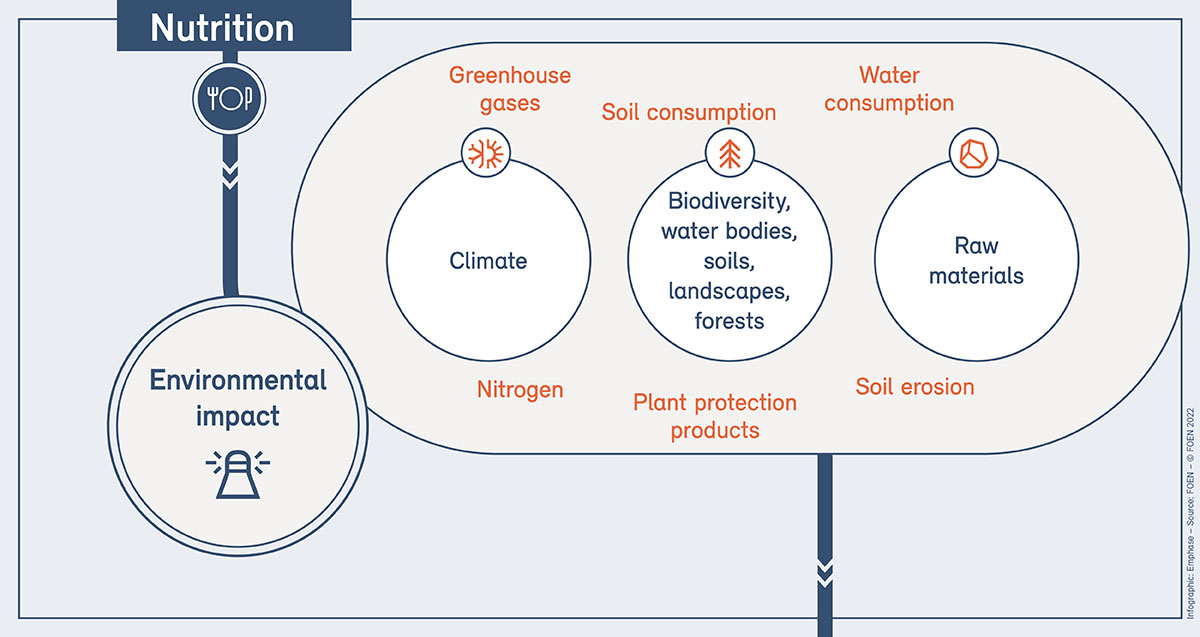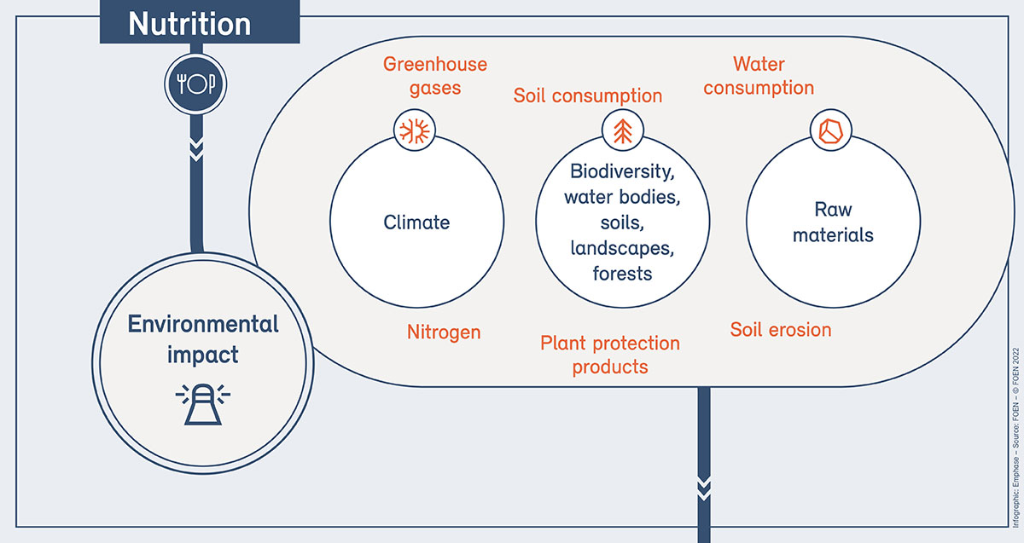Food represents pleasure, identity and tradition. Agricultural production, industrial food processing and packaging, distribution, preparation and consumption all have an impact on the environment both locally and globally. The principal problems include greenhouse gases, nitrogen, fertiliser and PPP emissions, and soil consumption.
The food consumed in Switzerland is manufactured in increasingly globally-oriented production chains, where imports of foodstuffs, feed and agricultural inputs play an important role. Two thirds of the environmental impacts caused by agricultural production, industrial food processing and packaging, distribution, preparation and consumption, occur abroad.
In the food and nutrition system, it is primarily animal products and beverages that have a high environmental impact (in particular wine and coffee, e.g. through the extensive use of plant protection products).
Climate
The Swiss food and nutrition system impacts the environment through large quantities of greenhouse gases and ammonia, which are caused by the production of meat and dairy products. The greenhouse gases generated by food processing, storage (cooling) and transport are an additional burden.
In 2020, agriculture contributed 14.6% of Switzerland’s greenhouse gas emissions. Greenhouse gases from agriculture have decreased only slightly since 2000 (similar to air and water pollution).
Biodiversity
Food cannot be produced without living soils and the diversity of pollinating insects. Through excessive levels of nitrogen, phosphorus and plant protection products, agriculture also harms soil fertility, biodiversity, and air and water quality. For example, intensive food production may come at the cost of clean drinking water reserves, flood defences and carbon sinks.
Moreover,the cultivation of imported products, such as cocoa andsoya, leads to the loss of valuable forests in producing countries.
In order to meet the environmental targets in agriculture, substantial progress is still needed so as not to exceed the carrying capacity of ecosystems. Nitrogen surpluses are still too high and have been stagnating since the late 1990s. Particularly high volumes of nitrogen accumulate in regions in which livestock is held in excessive numbers and fed on imported feed. Conversely, extensive livestock farming can favour bioversity.
Plant protection products in excessive concentrations can be found in many smaller and medium-sized surface waters, particularly in regions with a great deal of arable farming and special crops.
Groundwater is widely contaminated with nitrates and pesticide degradation products. As a result, in some places it can only be used as drinking water to a limited extent.
Biodiversity on agricultural land is in a very poor state, especially in lowland areas, even though the areas reserved for promoting
biodiversity are having the desired effect. However, the locations, including the connectivity, and quality of these areas must be improved.
Raw materials
Swiss food consumption causes 2.8 million tonnes of avoidable food waste per year along the entire value chain. That equates to around 330kg per capita per year. This is food thrown away by:
- households or restaurants,
- out-of-date products in shops,
- discarded produce and unused by-products that result from processing.
Further Informations
Links
Documents
Lebensmittelverluste in der Schweiz: Umweltbelastung und Verminderungspotenzial (PDF, 5 MB, 25.10.2019)Im Auftrag des BAFU
Last modification 21.12.2022







